Over the past 25 years, England and Wales have had huge successes with teenage pregnancy. Based on both national and international data, this article sets out the big picture as well as explaining why it’s a good thing that there are now fewer new teenage mums each year.
Before we dive into data, it’s important to say that, if you are (or were) a teenage mother, there should be no shame and this article is not a criticism. Overall, UK data says that better outcomes come from lower teenage pregnancy rates. But that doesn’t mean you aren’t a fantastic mum. Both things can be true.
The number of children being born to teenage mothers has been falling for many years and is now only a third of what it was 15 years ago. For national numbers to fall by two thirds is significant and, in this case is very good news.
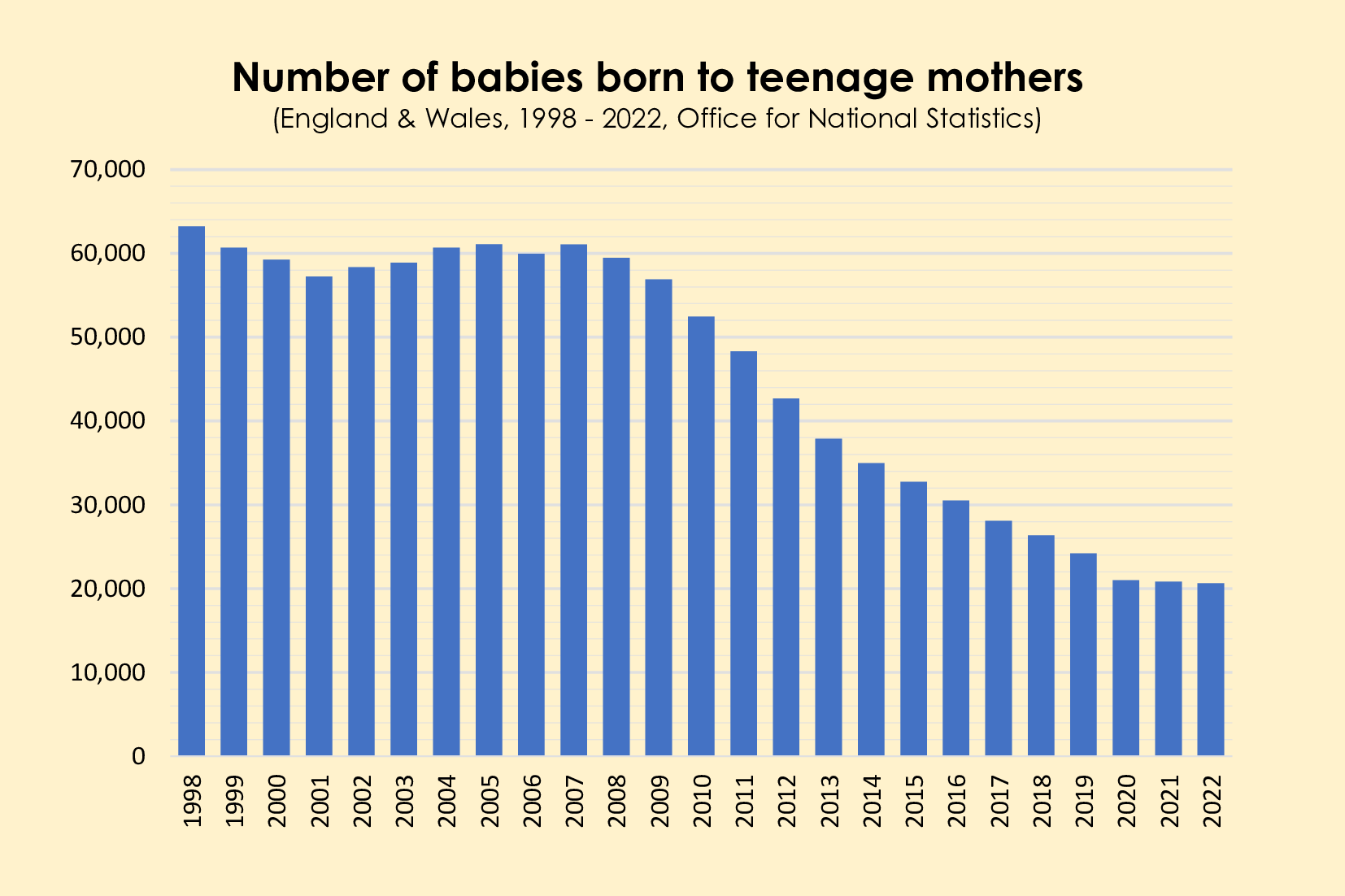
Note: Official data has a 3 year lag time – 2022 is the latest data.
Why do teenage pregnancies matter?
Teenage pregnancy is associated with poor outcomes for young women and their babies. So, it follows that waiting longer before having children leads to better outcomes for both child and mother.
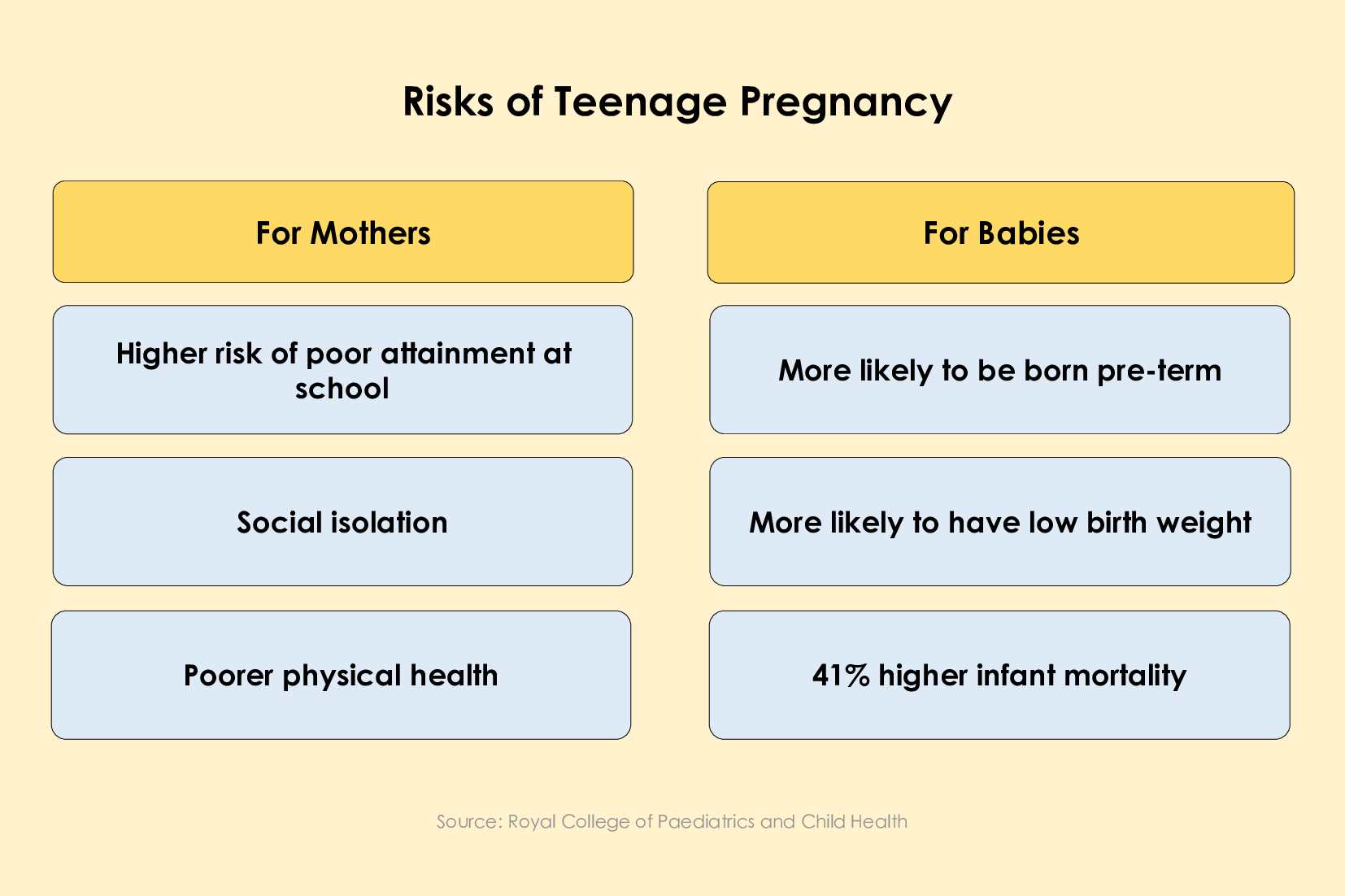
Is the fall in babies born to teenage mothers due to more abortions?
The percentage of pregnancies that end in abortion has risen over the last 25 years. This is true for females under 16, under 18 and also ‘all ages’. Often, pregnancies for under 18s aren’t seen by health workers as early as we’d like (they’re more often unplanned, confirmed late and things are sometimes slowed by the girl’s fear of disclosure).
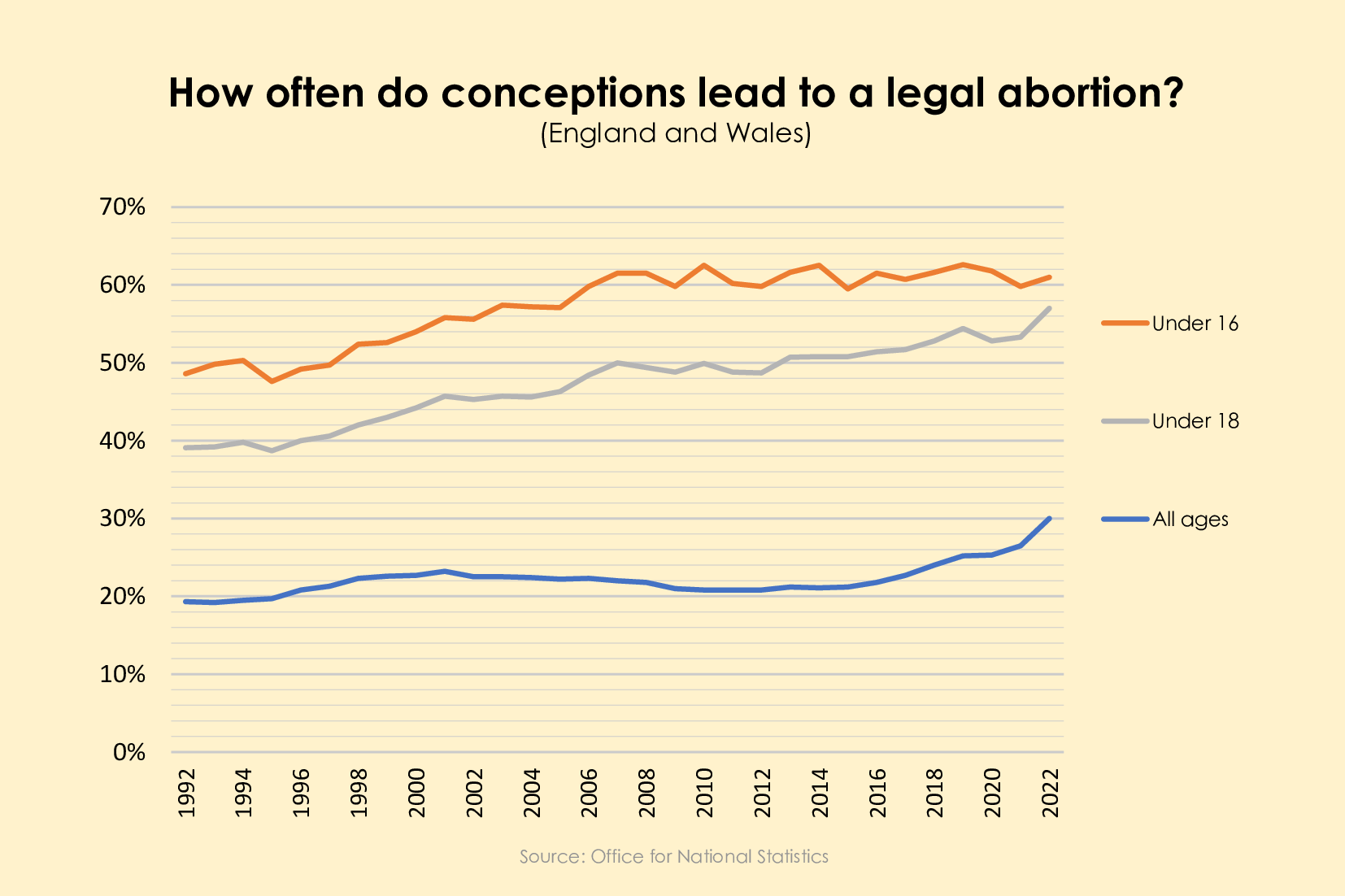
However, whilst the rate of abortion has risen, the actual number of abortions have fallen. Simply put, there are fewer births because fewer girls are getting pregnant.
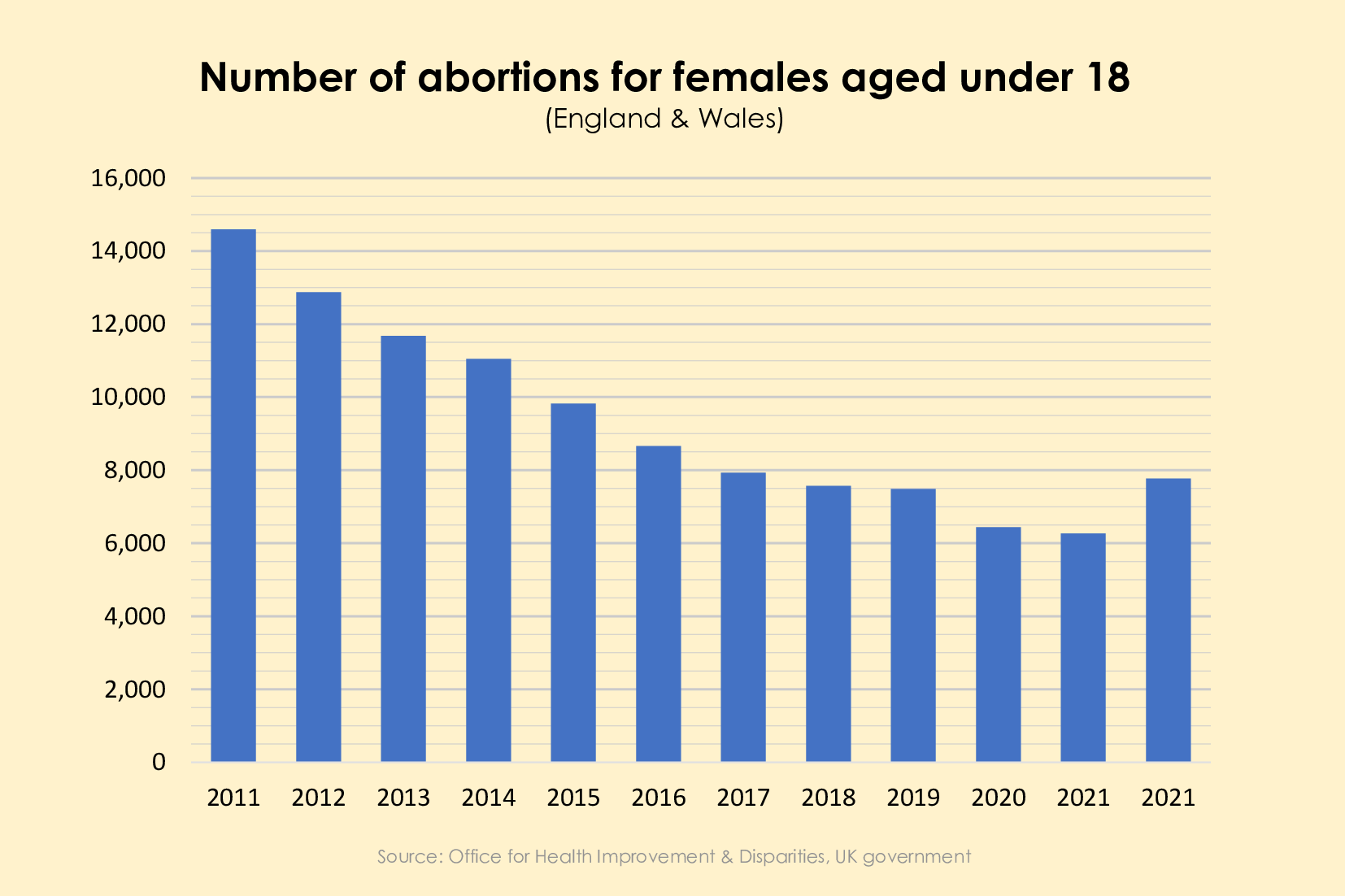
Where is teenage pregnancy highest?

For local areas, child poverty and unemployment have strongest link to pregnancies of under 18 year olds.
But there are some surprises: Parts of Cornwall, Cumbria and Lincolnshire have higer rates than expected. In these areas, access to contraception and sexual health clinics may be an additional factor – especially where public transport options are limited.
Which individuals have higher rates of teenage pregnancy?
The strongest associated risk factors for pregnancy before 18 are:
⚠️ Free school meals eligibility
⚠️ Persistent absence by the age of 14
⚠️ Poorer than expected progress in Y7-Y9
⚠️ Being looked after or a care leaver.
How do we compare to Europe?
The proportion of babies born to teenage mothers in England and Wales is lower than most of Eastern Europe. However, the whole of Western Europe performs better which suggests that there is still lots of room for improvement.

In short, we are doing badly compared with the rest of Western Europe – that tells us we must do more, especially for youngsters from deprived backgrounds, with poor attendance or who are in care. The highest possible quality relationships and sex education (RSE) is crucial as there are still too many young adults who are critical of the quality of the RSE that they received. Pupil referral units and special schools must do even better – but RSE in mainstream primary and secondary schools is also absolutely vital.
How do we reduce teenage pregnancy even more?
The World Health Organization point out that there is consistent evidence that high quality RSE helps teenagers to be informed about contraception and often acts to delay the age that a teenager first has sex.
More broadly, Alison Hadley, an pre-eminent expert in teenage pregnancy, recommends ten approaches that successful areas do well.
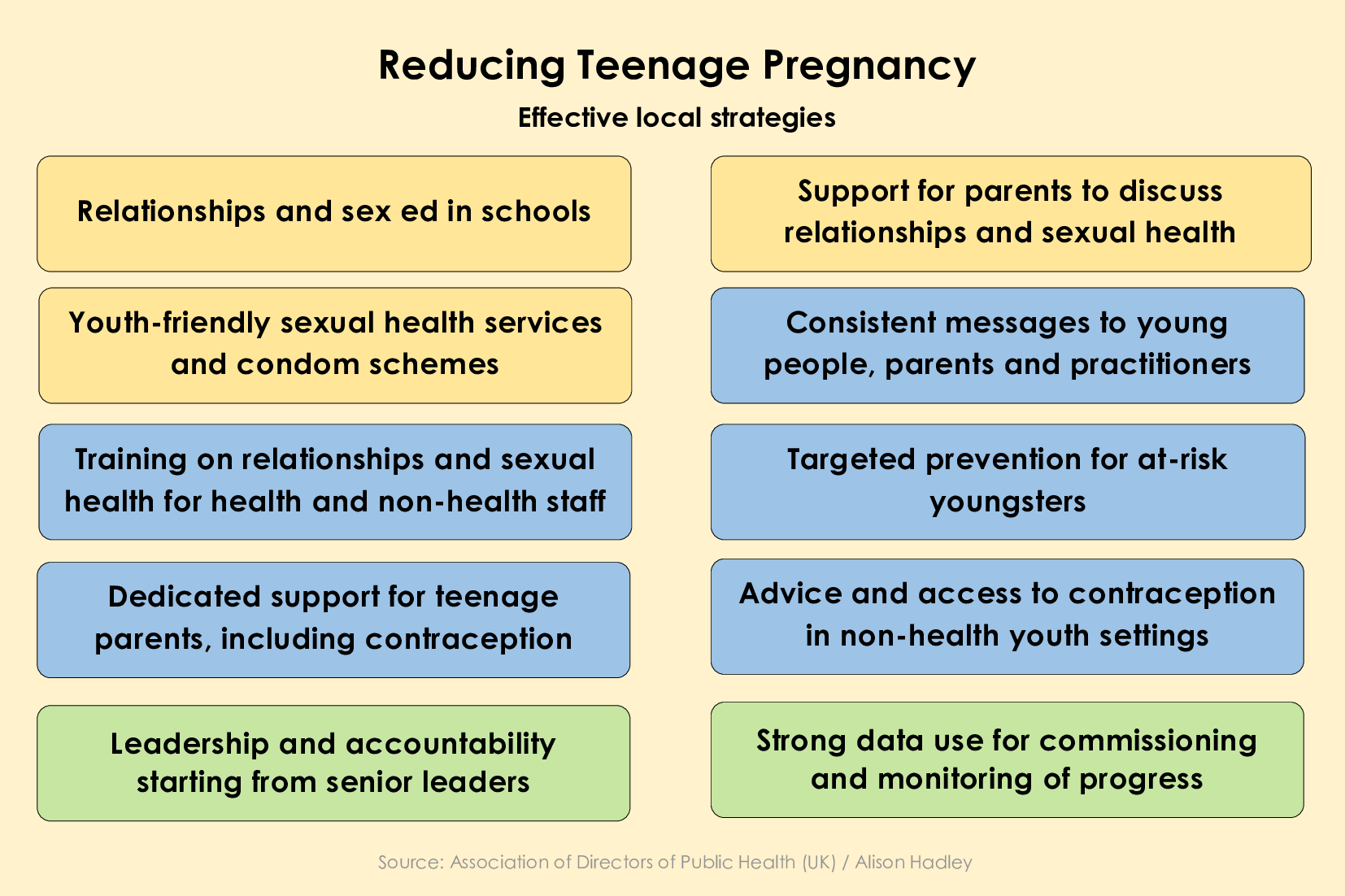
That means that schools should keep improving the quality of relationships and sex education (RSE), with good information about contraception and sexual health. But also, redouble their efforts to communicate, educate and support parents and encourage parents to talk about relationships and sex with their child.
If schools improve in these areas, outcomes for our young women, girls and children will be even better.
The decline in teenage pregnancies should be celebrated as a success story – but data from elsewhere in Europe tells us that there is much more to be done.
More interesting reads
Further info
- If you are a teacher, read more on teenage pregnancy in Alison Hadley’s evergreen TES article.
- References: Data from Office for National Statistics.
- Images: 9000 Lives apart from title image / England Map which are ONS: www.ons.gov.uk/visualisations/dvc2531/multimap/index.html
Need help with inclusion in your council, trust or school?
If so, check out our feedback or get in touch.
Keep up to date with inclusion from 9000 Lives
- 𝕏 @9000Lives_org
- BlueSky @9000lives.org

